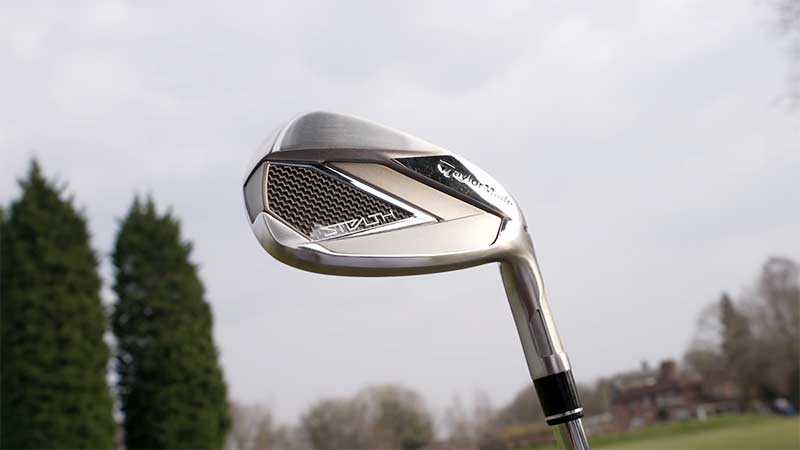Ever wondered why some golfers seem to hit straighter and more consistent shots even with less-than-perfect swings? The secret often lies in their choice of equipment, specifically forgiving golf clubs.
These clubs, also known as game improvement clubs, are designed to compensate for mishits and poor contact, making them a game-changer for recreational golfers.
Forgiving golf clubs feature design elements like lightweight graphite shafts and larger, higher-lofted club heads. These features help the ball travel farther, higher, and straighter, even when the swing isn’t perfect.
For casual golfers looking to enhance their game, understanding what makes a golf club forgiving and how to choose the right one can make all the difference.
Forgiveness in Golf Clubs
“Forgiveness” in the context of golf clubs refers to their ability to compensate for mishits or imperfect swings by providing a more consistent and accurate shot.
What Makes a Golf Club Forgiving?
Forgiveness in a golf club refers to its ability to minimize the negative effects of off-center hits and poor swings. Features like perimeter weighting, wider soles, and larger sweet spots enhance this characteristic.
Perimeter weighting redistributes the club’s weight to the edges, stabilizing it during off-center impacts. Wider soles prevent the club from digging into the ground, providing smoother contact.
Larger sweet spots increase the area on the clubface that delivers optimal performance, reducing mishit penalties.
These forgiving features are particularly beneficial for novice golfers or those looking to improve their consistency.
Investing in forgiveness golf clubs can significantly enhance your game by offering a more enjoyable and less frustrating playing experience.
Materials and Technology Behind Forgiving Golf Clubs
Manufacturers use specific materials and technologies to create forgiving golf clubs. Graphite shafts are popular due to their lightweight nature, allowing easier swings and higher swing speeds.
Club heads with larger profiles and higher lofts help launch the ball higher and straighter. Advanced technologies like vibration dampening systems reduce the impact feel, making mishits more manageable.
Game improvement irons often feature multi-material constructions, combining steel and lightweight composites for better weight distribution and performance.
Choosing Forgiving Golf Clubs
Choosing forgiving golf clubs involves considering several factors to match the clubs to your skill level, swing tendencies, and preferences.
Here’s a guide to help you choose forgiving golf clubs:
Factors to Consider When Selecting Forgiving Clubs
Several factors influence the forgiveness of a golf club, and understanding these will aid in making an informed decision.
Loft and Spin Rate
Drivers with higher lofts and optimized spin rates provide more forgiving shots. They help beginners maximize distance even with slower swing speeds.
Shaft Material
Graphite shafts are lighter, reducing strain on the golfer and allowing for smoother swings. They also dampen vibrations, enhancing comfort and feedback.
Club Head Design
Perimeter weighting and larger sweet spots reduce the impact of off-center hits. Clubs with these features provide more consistent results.
Moment of Inertia (MOI)
High MOI clubs resist twisting at impact, maintaining the ball’s intended path even with poor contact. This is essential for achieving straighter and longer shots.
Club Weight
Lightweight clubs, such as those using carbon fiber, make it easier to swing and generate power. Adjusting weight distribution can also help improve shot accuracy.
Irons, Woods, and Wedges: Which Are Most Forgiving?
Each type of club offers different levels of forgiveness and caters to various aspects of a golfer’s game.
Forgiving Irons:
- Design Elements: Forgiving irons often feature a cavity back design, wider soles, and a lower center of gravity. These help improve launch and accuracy on off-center strikes.
- Examples: The Cobra AirX irons are lightweight and easy to swing, making them a good choice for beginners. The Takomo 101T irons provide a balance of forgiveness and performance.
Forgiving Woods
- Features: Higher lofts and shallow faces make fairway woods easier to hit from various lies. Woods with lightweight shafts help generate higher ball flights.
- Examples: Paradym X woods have lighter, higher-launching shafts. These woods assist players in achieving better trajectories and distance.
Forgiving Wedges
- Characteristics: Forgiving wedges often have wider soles and more bounce to prevent digging and improve performance on different turf conditions.
- Examples: Wedges designed with these features help even less experienced golfers manage tricky short game shots.
Benefits of Using Forgiving Golf Clubs
Using forgiving golf clubs offers several benefits, especially for players who struggle with consistency or are working to improve their game:
How Forgiving Clubs Can Improve Your Game?
Forgiving golf clubs are designed to enhance the performance of players by mitigating the effects of off-center hits and poor swings. These clubs come with various features that help golfers of all skill levels to improve their game. Here’s how forgiving golf clubs can make a substantial difference:
1. Larger Sweet Spots
Forgiving golf clubs feature larger sweet spots, which significantly reduce the negative impact of off-center hits. A larger sweet spot increases the chance of making solid contact with the ball, even if the swing isn’t perfect. This means more consistent shots and better overall performance on the course.
2. Balanced Weight Distribution
The balanced weight distribution in forgiving clubs ensures stability during the swing. This helps in maintaining control and accuracy, leading to straighter shots. Balanced clubs are easier to handle, especially for beginners or players who struggle with maintaining a steady swing.
3. Lower Center of Gravity
Forgiving clubs often have a lower center of gravity, which aids in achieving higher launch angles. This feature helps golfers get the ball airborne more easily, resulting in longer carry distances. A higher launch angle is particularly beneficial for players with slower swing speeds or those who have trouble getting the ball off the ground.
4. Lightweight Graphite Shafts
Many forgiving golf clubs are equipped with graphite shafts, which are lighter than traditional steel shafts. The reduced weight allows for increased swing speed, contributing to greater distance and improved overall performance. Graphite shafts also absorb more vibrations, providing a smoother feel on impact.
5. Cavity Backs and Muscle Backs
Cavity back and muscle back designs are common in forgiving irons. Cavity backs have a hollowed-out section on the back of the clubhead, redistributing weight around the perimeter. This increases forgiveness on off-center hits and helps in maintaining ball speed. Muscle backs, while more traditional, are also designed to provide a balanced feel and improve control and precision.
6. Consistent Ball Speed
Forgiving clubs are engineered to maintain ball speed, even on less-than-perfect swings. This consistency in ball speed translates to more predictable distances and improved accuracy. Golfers can rely on their clubs to perform well, even when their swings are not flawless.
Who Should Consider Forgiving Golf Clubs?
Golfers with a high handicap or those still refining their swing technique benefit greatly from forgiving golf clubs. Beginners and intermediate players, for instance, often struggle with achieving consistent ball contact.
Forgiving clubs compensate for these inconsistencies. Golfers experiencing difficulties with distance or trajectory also gain from using these clubs.
While advanced players might prefer standard or specialized clubs for precision, forgiving clubs offer significant advantages in improving overall game performance for less experienced golfers. They provide the confidence and ease necessary to focus on developing swing mechanics.
Popular Features of Forgiving Golf Clubs
Forgiving golf clubs incorporate various features designed to minimize the negative effects of mishits and enhance playability for golfers of all skill levels.
Some popular features include:
Design Elements That Enhance Forgiveness
Forgiving golf clubs incorporate several design elements aimed at improving playability for golfers of all skill levels. A larger sweet spot is a prominent feature that helps minimize the impact of off-center hits.
For example, clubs like the Yonex Ezone Elite 4 and Titleist T200 use advanced materials and construction to expand this area.
Balanced weight distribution is another crucial factor. Manufacturers strategically place weights to stabilize the club, reducing twist on impact. For instance, the Titleist T200 uses dense tungsten weights to achieve this balance.
A lower center of gravity (CG) facilitates higher launch angles, allowing the ball to travel farther and with more accuracy. Clubs such as the Ping i230 incorporate low CG by repositioning weight low and towards the perimeter of the clubhead.
Graphite shafts enhance swing speed, making it easier to generate power without compromising control. Cleveland’s iron designs, with their lightweight and flexible faces, exemplify this feature.
Innovations in Forgiving Golf Clubs
Recent innovations have significantly improved the forgiveness of golf clubs. Wilson’s use of power holes filled with polymer enhances ball speed and mitigates toe strikes, a common issue for mid-handicappers.
AI-designed elements, like those in Callaway’s Paradym series, use advanced algorithms to optimize club face and structural design. This results in consistent performance even on mishits.
Face technology, such as the proprietary face blast and laser mill line process used by Cleveland, increases surface roughness to optimize spin and minimize the chances of erratic shots.
Tungsten toe and tip weights, as seen in the Ping i230 irons, offer additional forgiveness by counteracting severe mishits and maintaining ball speed.
Frequently Asked Questions
What does forgiveness mean in golf clubs?
Forgiveness in golf clubs refers to design features that reduce the adverse effects of off-center hits and poor swings, helping the ball travel straighter and farther than it would without these design elements.
What characteristics make a golf club forgiving?
Forgiving golf clubs typically have larger sweet spots, balanced weight distribution, a lower center of gravity, and graphite shafts. These features help improve swing speed, launch angle, and overall playability.
How do forgiving golf clubs benefit beginners?
Forgiving golf clubs help beginners by compensating for miss-hits and unrefined swings, making it easier for them to achieve better distances and more accurate shots, thereby boosting their confidence and enjoyment of the game.
Are forgiving golf clubs only for beginners?
No, forgiving golf clubs are beneficial for golfers of all skill levels. While they are particularly helpful for beginners, advanced players also benefit from the enhanced consistency and playability these clubs offer.
What are some popular innovations in forgiving golf clubs?
Popular innovations include larger sweet spots, AI-designed elements, power holes, advanced face technology, and tungsten weights. These advancements aim to enhance the forgiveness, consistency, and playability of the clubs.
Conclusion
Forgiving golf clubs have revolutionized the way golfers approach their game, providing tools that minimize the negative effects of off-center hits and poor swings.
By incorporating advanced features like larger sweet spots, balanced weight distribution, and lower centers of gravity, these clubs offer enhanced playability and consistency.
Innovations such as power holes, AI-designed elements, and tungsten weights further elevate performance, making forgiving clubs essential for golfers of all skill levels.
Embracing these technological advancements can lead to more enjoyable and successful rounds on the course.








Colin McCarthy